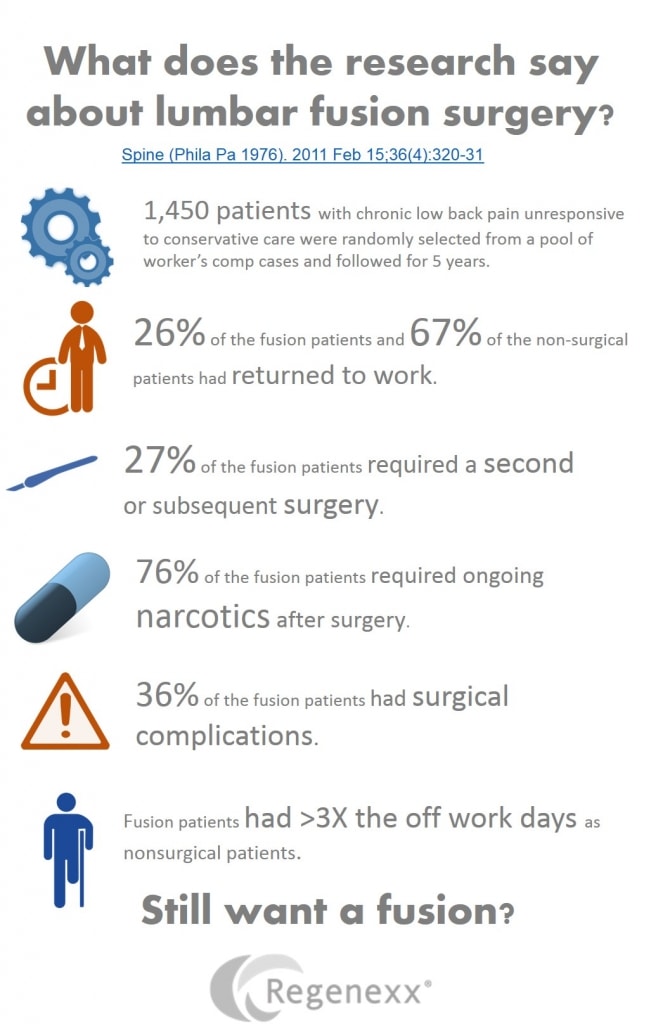Back Surgery Options: Why Would You Want a Fusion?
It’s hard for patients to understand that much of the research they read or the advice they’re given by physicians has biases. As someone who has treated patients after low back fusion for the last 20+ years, I came across a research paper yesterday that comes closest to representing what I see clinically after patients get a low back fusion. In summary, of all of the back surgery options out there, as I tell my patients, fusion is the dog with the biggest fleas.
First, it’s hard for a patient who’s in pain to conceptualize that since a low back fusion is at the end of clinical decision making (i.e. try everything else first), that the surgery isn’t definitive. In fact, we don’t have any high level evidence that the surgery is effective. What we do have is study after study published by biased spine surgeons and fusion device manufacturers that seem to show that fusion works. Yet this doesn’t fit with the clinical experience of anyone who sees allot of post surgery patients. In fact, all one has to do is to send the patient who is still in pain back to the surgeon who performed the operation to get an inside look at why the existing low level studies on fusion are likely not close to accurate. The patient in serious pain is invariably told that the surgical site looks good and that the surgeon is done with that patient.
Yesterday I came across a research paper published by non-surgeons about back fusion procedures performed in worker’s comp cases. It was the most realistic portrayal of fusion results by a disinterested third party that I had seen. More importantly, the bleak outcomes painted by the authors were spot on for what I have observed over the past 20+ years. The infographic is above, but the authors found that fusion patients had much less return to work, some needed a second or subsequent surgery, many continued on narcotics after the surgery, more than a third had complications, and they needed more than three times the off work days as non-fusion patients.
How about other research? How about this paper from December, which showed that after looking at all of the research, the complication prone back fusion procedure was no better than no surgery. Still want a fusion?
The upshot? The paper I quoted above isn’t perfect, but having said that, a perfect research paper on fusion doesn’t exist at all. This one is as close to reality as I have seen, in that most post fusion patients that we see are miserable with nowhere to turn. Don’t get bit by these monster fleas!
Does this mean that all fusion surgery isn’t necessary? No, I’ve seen a few patients with severe instability or other issues that actually needed a fusion. However, those patients in daily clinical practice are few and far between!

NOTE: This blog post provides general information to help the reader better understand regenerative medicine, musculoskeletal health, and related subjects. All content provided in this blog, website, or any linked materials, including text, graphics, images, patient profiles, outcomes, and information, are not intended and should not be considered or used as a substitute for medical advice, diagnosis, or treatment. Please always consult with a professional and certified healthcare provider to discuss if a treatment is right for you.

